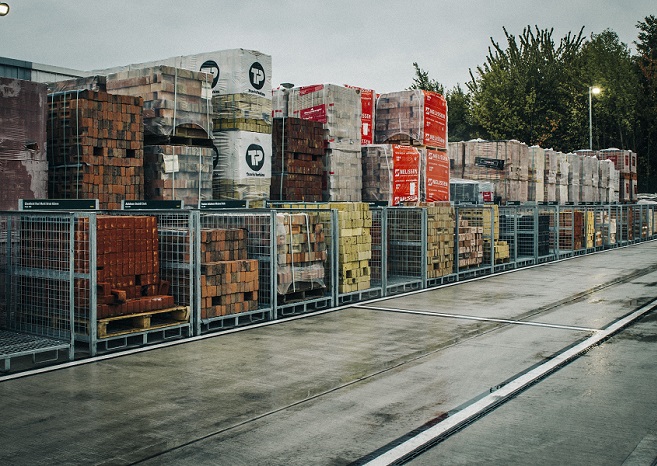Brick Types Explained
Reading time: 8 minutes
What are the different types of bricks?
Bricks are a cornerstone of construction, offering both aesthetic appeal and structural integrity. In the UK, the primary types of bricks used in construction include: common bricks, facing bricks, engineering bricks, and concrete blocks. Each type serves a distinct purpose, from providing a robust framework to enhancing the visual appeal of buildings. Understanding these different bricks is crucial for any construction project, as the right choice can significantly impact the durability, appearance, and overall success of the build.
- Engineering Bricks
- Concrete Blocks
- Common Bricks
- Facing Bricks
Light texture and smooth bricks tend to reflect modern builds, with solid edges and glazed finishes – it’s details such as these can raise the price point higher than common bricks. For more of an older building brick style, heavy textured bricks bring a more worn and weathered feel. For many repair or extension jobs on older properties, it’s important to look for reclaimed bricks that have stood the test of time naturally.
Special types of bricks
Building projects often need more than standard bricks; special types with unique properties and specific purposes are vital in construction. These house brick types vary in shape and function, ensuring structural strength, looks, and longevity. Let's explore the commonly used special bricks in construction:
Fire bricks
Fire bricks are specially made to withstand high temperatures without melting or breaking, crucial for maintaining structural integrity. They're mainly made of alumina and silica, giving them heat-resistant properties. The process involves moulding raw materials, and then firing them at high temperatures for strength. They come in types based on alumina content, affecting thermal conductivity and resistance. High-alumina bricks excel in rapid temperature change settings.
Air bricks
Air bricks are important in modern construction for ventilation, particularly in areas like subfloors prone to moisture damage. They come in materials such as clay, plastic, and metal with air circulation holes to prevent dampness and preserve building integrity. Proper positioning above ground level on external walls is crucial for optimal airflow. Consider the material and hole size when selecting air bricks for different construction needs.
Shaped bricks
Special-shaped bricks are essential in modern construction for their versatility and distinctive design properties. These bricks come in shapes like bullnose, cant, plinth, and radial to meet architectural needs. They allow for intricate designs without extensive cutting, reducing costs and ensuring structural integrity. Shaped bricks enhance visual appeal, offer smooth transitions, and provide practical benefits such as weather resistance and durability. Architects and builders aiming for quality finishes and innovative designs should understand the variety and uses of shaped bricks.
Damp-proof course bricks
DPC bricks are key for protecting property foundations, placed in lower walls to block water and prevent dampness. Made from low-permeability materials, they prevent issues like mould and structural weakening. Consider soil type, climate, and building design when selecting DPC bricks. Opting for top-quality DPC bricks enhances construction durability, ensuring a safe, dry, and healthy living space.
Which bricks are good for house construction?
Clay bricks offer a classic look, good insulation, and lasting durability, standing up well to tough weather with low upkeep. Concrete bricks are versatile and budget-friendly, valued for their strength and consistency, and perfect for building structures. They come in different colours and textures for design flexibility. Both brick types have unique perks, so choose based on project needs. Exploring different types of bricks and blocks for construction can help you find the perfect match for your specific requirements.
Clay brick classes
The amount of bricks produced for construction work across the UK somewhere in the billions. With that level of mass production it stands to reason that not all bricks will be produced to exactly the same standards. Through high levels of kiln production there are some bricks that are burnt to different degrees. This means that there are different clay brick classes that are used for different jobs, which are graded from class one, the best quality to class four.
Brick and mortar colours
Brick colour is important, making the difference between a building property that ‘works’ in the space it’s built in, or doesn’t quite suit. Choosing brick and mortar colours can include the overall look for architectural reasons, finding colours that match existing brickwork for repairs or because the building is in a particular part of the country.
Order full pallets of bricks, blocks, special shaped bricks and essential damp proof coursing and ventilation online. We’re here to help you with any construction job from below-ground and upwards!
*Statista: annual deliveries of bricks in Great Britain 2022.
Disclaimer: The information contained on this page is intended as an overall introduction and is not intended as specific advice from a qualified professional. Travis Perkins aims to avoid, but accepts no liability, in the case that any information stated is out of date.




